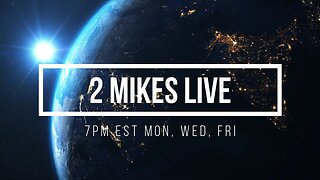NASA Is Going Back To The Moon - With Super Technology
Moon to Mars Overview - Working with U.S. companies and international partners, NASA will push the boundaries of human exploration forward to the Moon and on to Mars. NASA is working to establish a permanent human presence on the Moon within the next decade to uncover new scientific discoveries and lay the foundation for private companies to build a lunar economy.
Right now, NASA is taking steps to begin this next era of exploration.
It all starts with delivery services to the lunar surface from U.S. companies for scientific instruments and technology demonstrations as well as a spaceship, called the Gateway, in orbit around the Moon that will support human missions to the surface with reusable lander elements for decades to come. The Gateway will, for the first time, give NASA and its partners access to more of the lunar surface than ever before, supporting both human and robotic missions. The agency’s powerful Space Launch System rocket and Orion spacecraft will be the backbone to build the Gateway and transport astronauts to and from Earth.
Groundbreaking Science
The Moon is a treasure chest of science that holds many fascinating mysteries to explore – many that will advance our understanding of our home planet and solar system, as well as the cosmos beyond. NASA wants to use the Moon’s unique perspective as a science platform to look back at the Earth, observe the Sun, and view the vast universe. The discovery of water on the Moon and possible deposits of rare Earth metals also hold promise for both scientific and human exploration.
Surface Exploration
NASA is working to build and identify scientific instruments and technology demonstrations for Moon deliveries by U.S. companies as soon as 2019. These deliveries will help us learn more about the Moon, and provide opportunities to test new lander technologies. At the same time, NASA will begin to develop increasingly larger, more capable, and reusable landers for humans that can carry more cargo and land more precisely. Future landers also will carry large roving instrument kits to locate life-sustaining and mission-enabling resources on the Moon, and collecting and returning samples to the Gateway.
Lunar Outpost
The Gateway will enable months-long crew expeditions with multiple trips down to the lunar surface, enabling exploration of new locations across the Moon. The first part of the Gateway is targeted to launch on a private rocket in 2022 and will provide power and propulsion as well as communications for the spaceship. After it reaches orbit, and demonstrates its capabilities in space for about a year, NASA will launch astronauts in Orion on an SLS rocket carrying two new sections for the Gateway that will add a small living space and initial science and operational capabilities. Over time, the Gateway will become a way station for the development of refueling depots, servicing platforms, and a facility for processing samples from the Moon and other bodies in support of science and commerce.
Getting There: SLS and Orion
SLS and Orion are critical to the NASA’s exploration plans at the Moon and beyond. NASA designed the Space Launch System as the world’s most powerful rocket for safely sending humans on missions to deep space, and Orion is specifically designed to keep humans alive hundreds of thousands of miles from home, where getting back to Earth takes days rather than hours.
The first mission in 2020 will test the new spacecraft systems flying together for the first time, without crew, and the second flight is targeted for 2022 to take people for a flight test around the Moon. The third flight of SLS and Orion will kick-off delivery of new Gateway parts, with missions flying about once per year thereafter. SLS will launch the larger components for the Gateway on flights along with Orion, and Orion will be used as a tug to deliver those components to the required orbit for assembly. Together, Orion, SLS and the Gateway represent the core of NASA’s sustainable infrastructure for human exploration.
Music:Winning by Dhruva Aliman
Amazon- https://amzn.to/3dgKA52
https://music.apple.com/us/artist/dhruva-aliman/363563637
https://dhruvaaliman.bandcamp.com/album/hard-to-get-along
http://www.dhruvaaliman.com/
Spotify - https://open.spotify.com/artist/5XiFCr9iBKE6Cupltgnlet
-
 1:36:46
1:36:46
Roseanne Barr
3 hours agoFor Love of Country with Tulsi Gabbard | The Roseanne Barr Podcast #50
29.9K81 -
 33:59
33:59
TudorDixon
10 hours agoA Story of Sacrifice and Service with Joe Kent | The Tudor Dixon Podcast
2621 -
 27:22
27:22
The Nima Yamini Show
2 hours agoAlpha Nima Crushes Nick Fuentes & Business Tips with Dylan
30 -
 1:19:23
1:19:23
Mally_Mouse
2 hours agoLet's Hang - Cosplay Stream!!
5.21K1 -
 1:05:06
1:05:06
Lou Dobbs
8 hours agoLou Dobbs Tonight 5-31-2024
15.9K7 -
 1:42:57
1:42:57
The Quartering
8 hours agoDonald Trump Conviction BACKFIRES, Massive Funds Raised, Democrats Swap Parties & More
44.6K60 -
 26:11
26:11
Stephen Gardner
6 hours ago🔴HUGE TRUMP WIN! Biden, Hillary, Obama ALL IN BIG TROUBLE NOW!!
45.3K389 -
 9:42
9:42
Breaking Points
1 day agoTERRIFIED Biden Moves DNC Online
55.2K55 -
 1:09:34
1:09:34
Edge of Wonder
6 hours agoGravity Isn’t Real? Fact Checking Terrence Howard
22.1K8 -
 1:37:04
1:37:04
2 MIKES LIVE
8 hours ago2 Mikes Live #73 Open Mike Friday 5-31-24
23.3K6